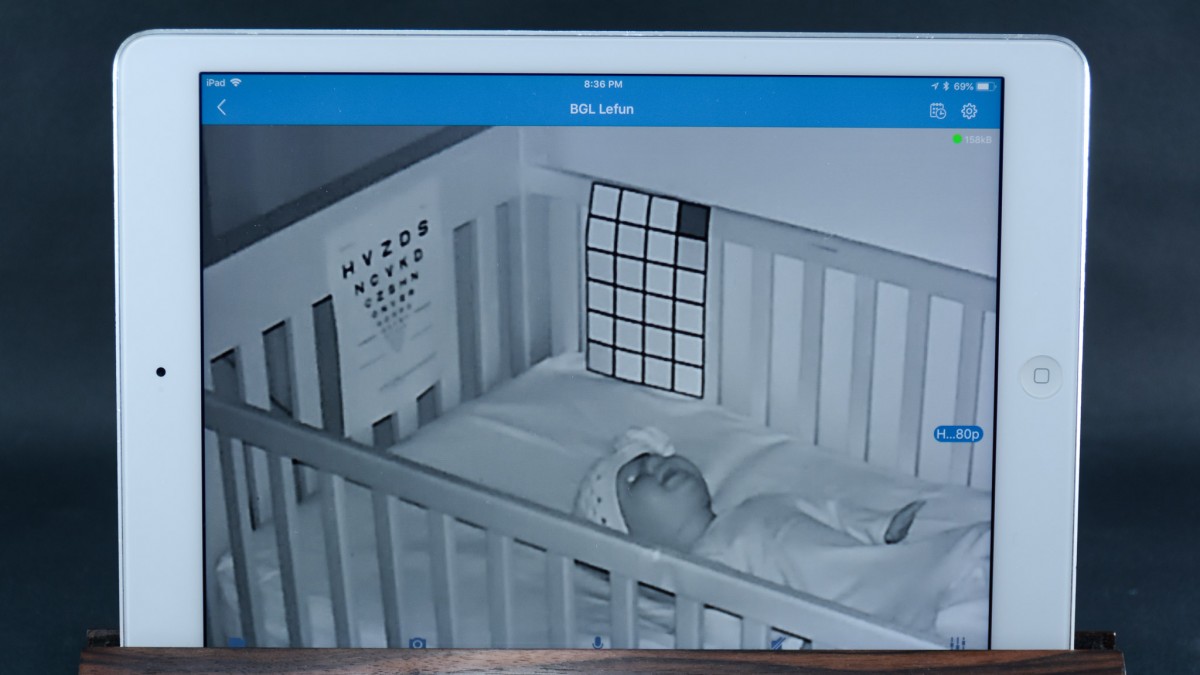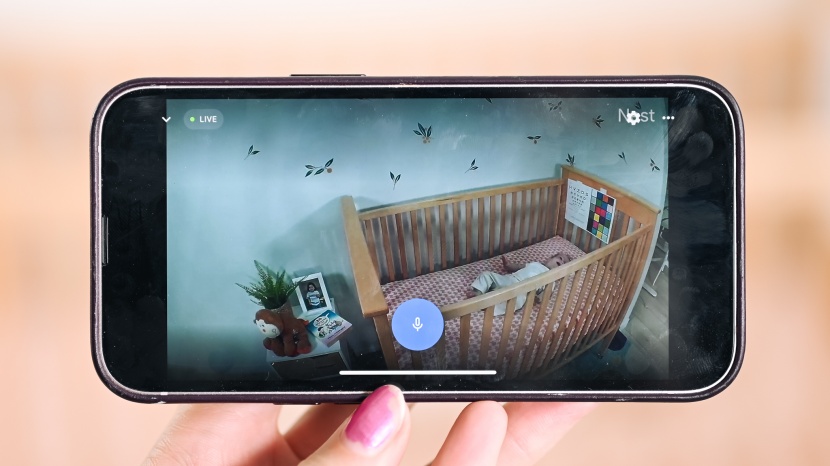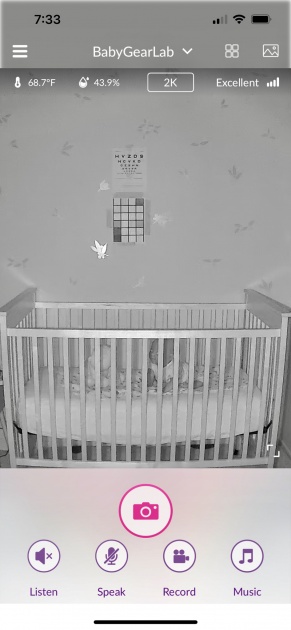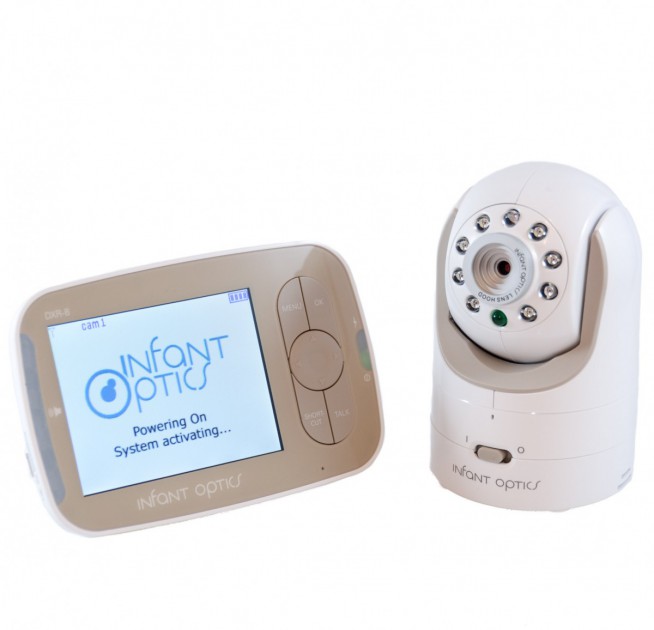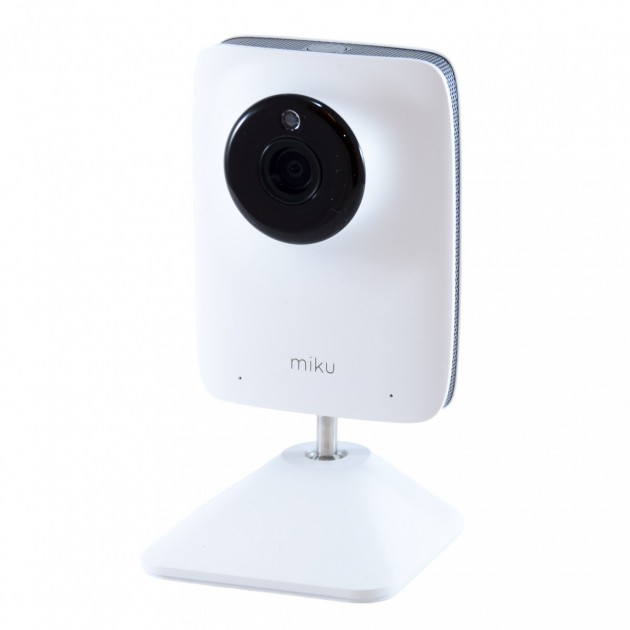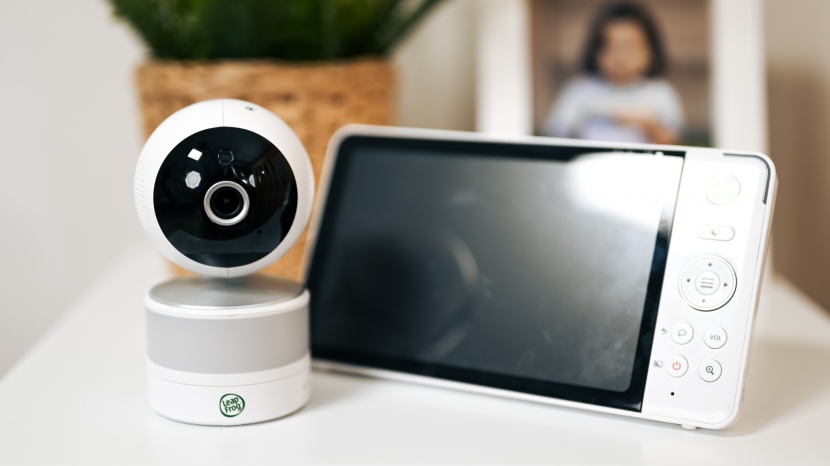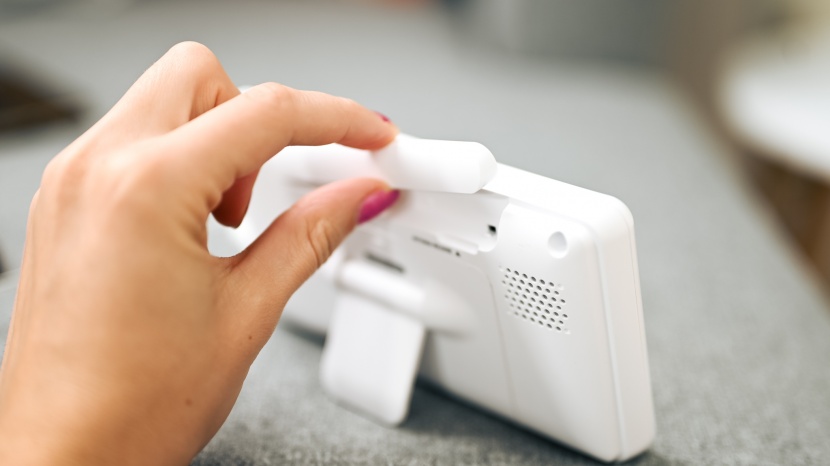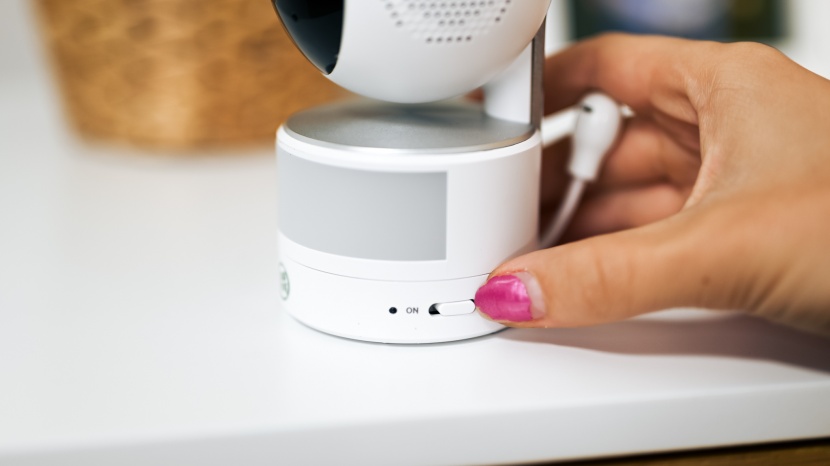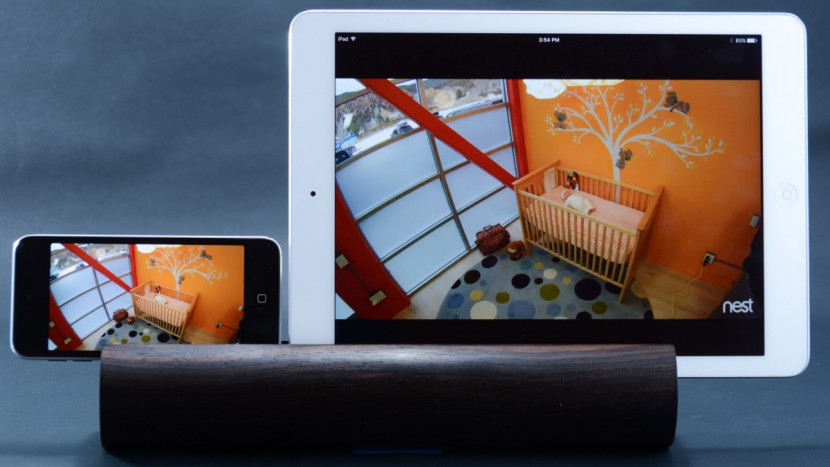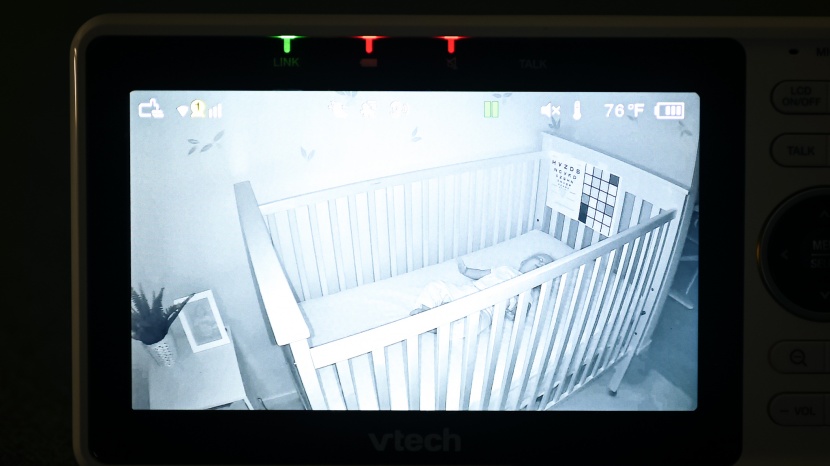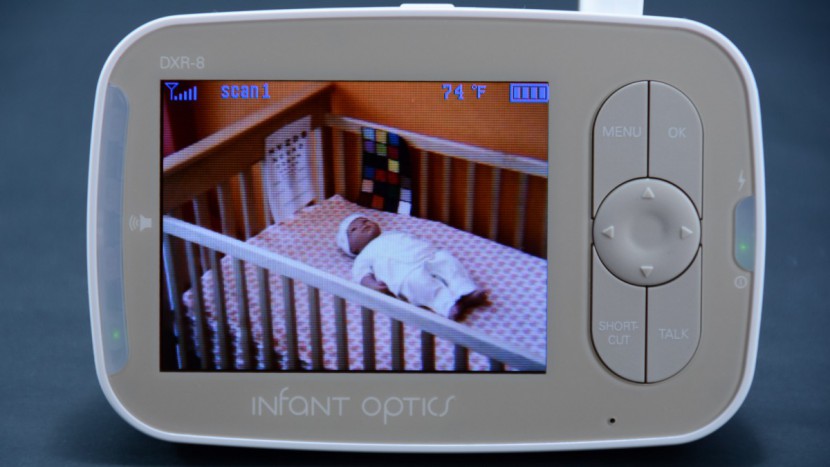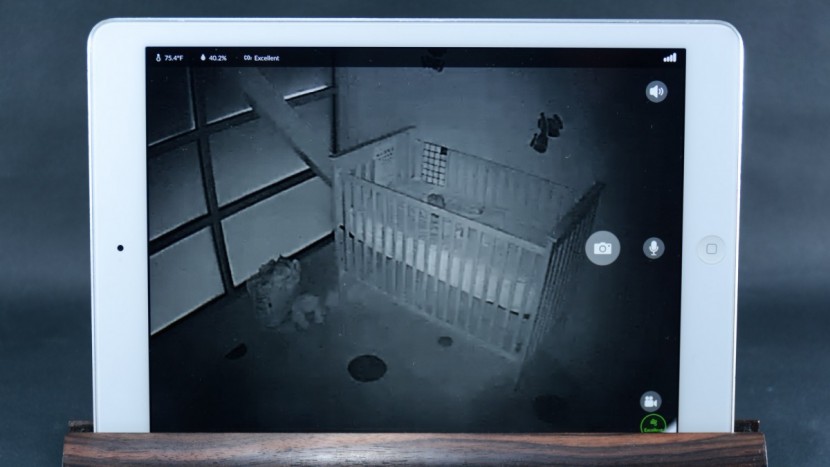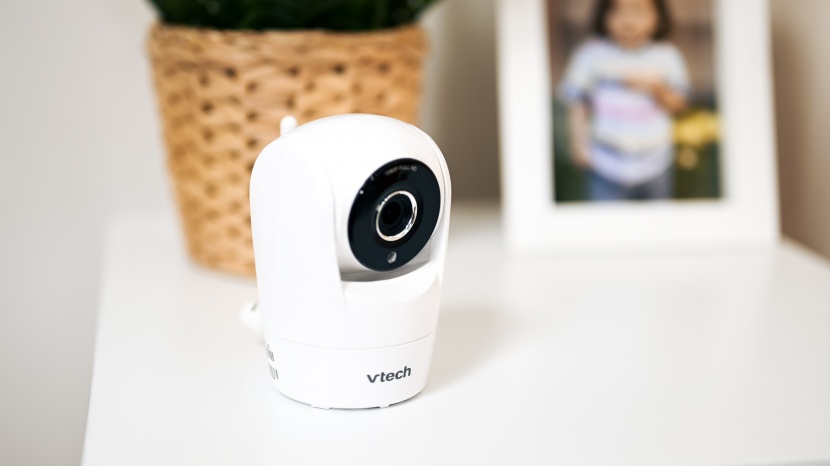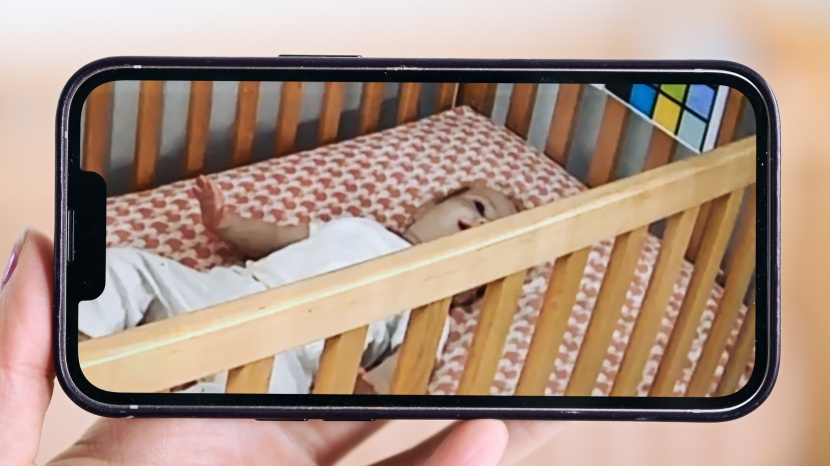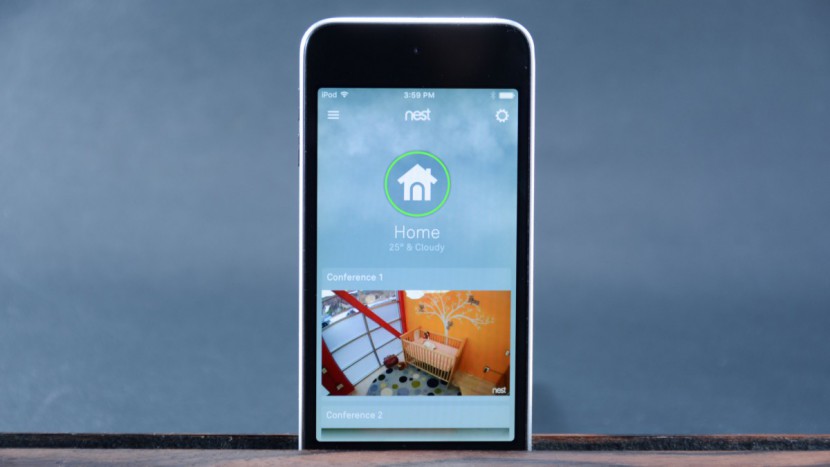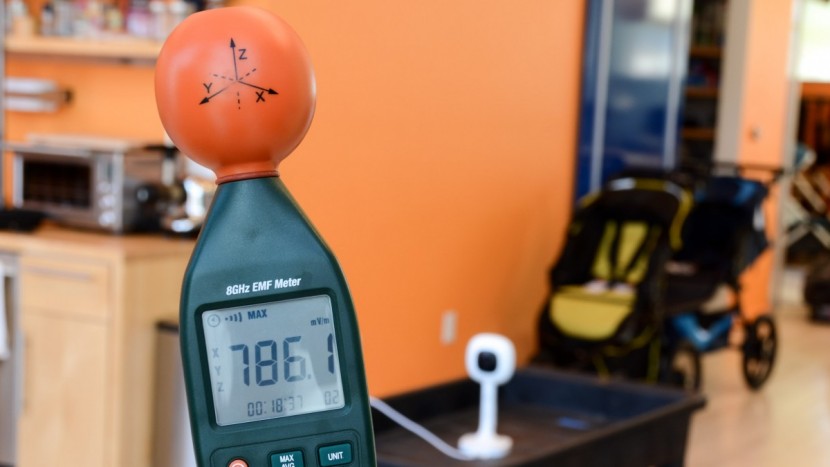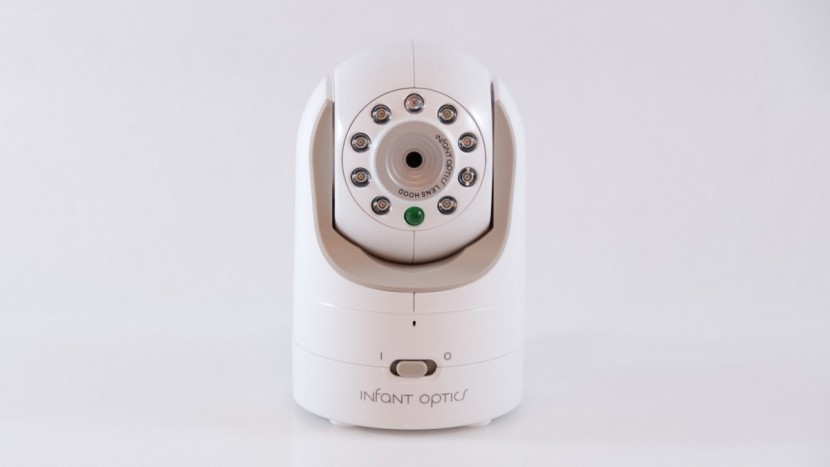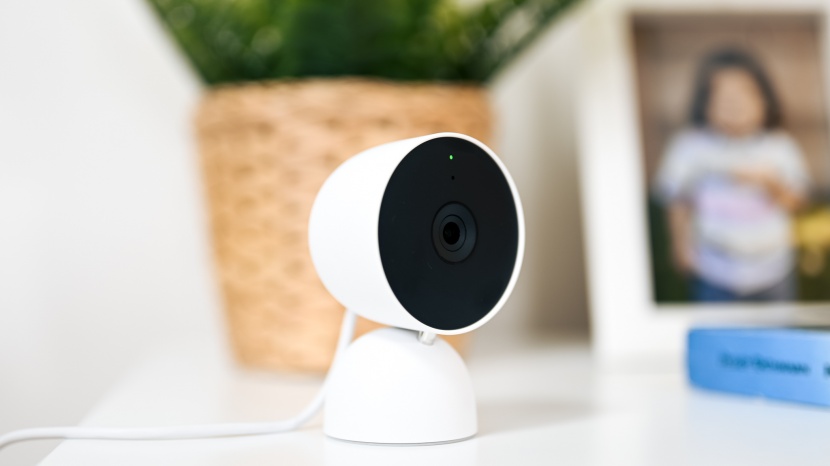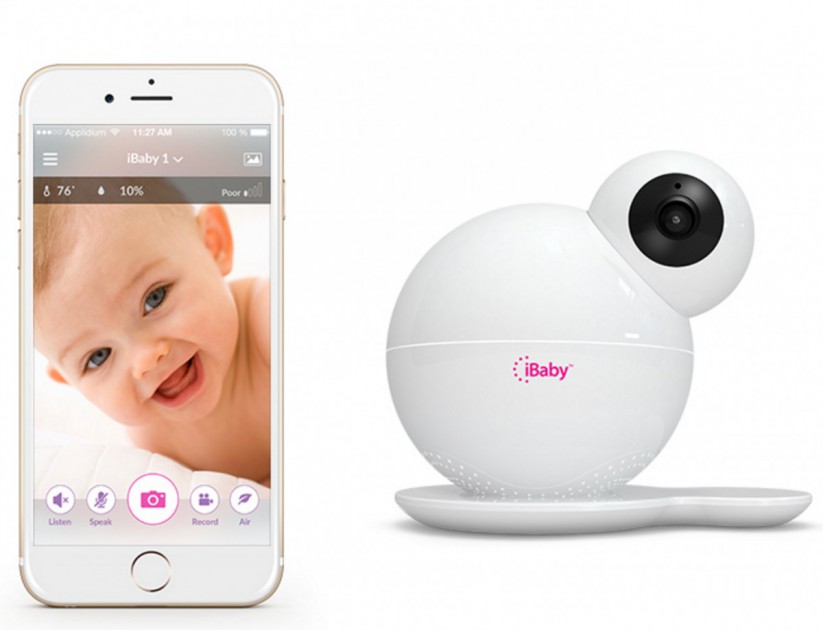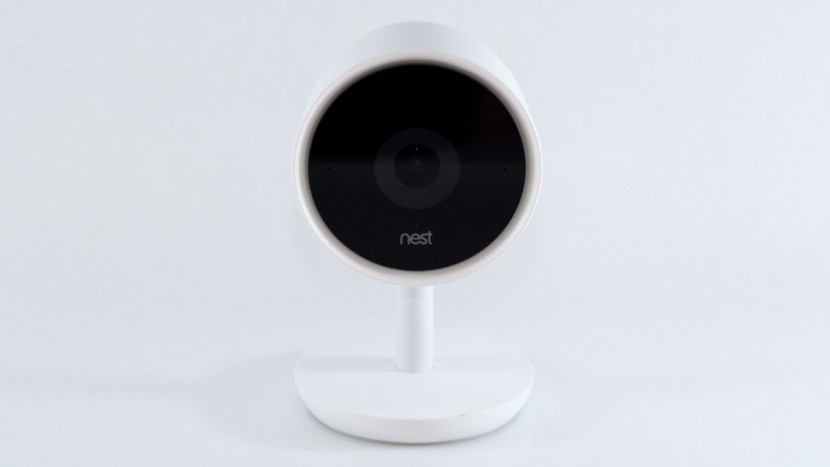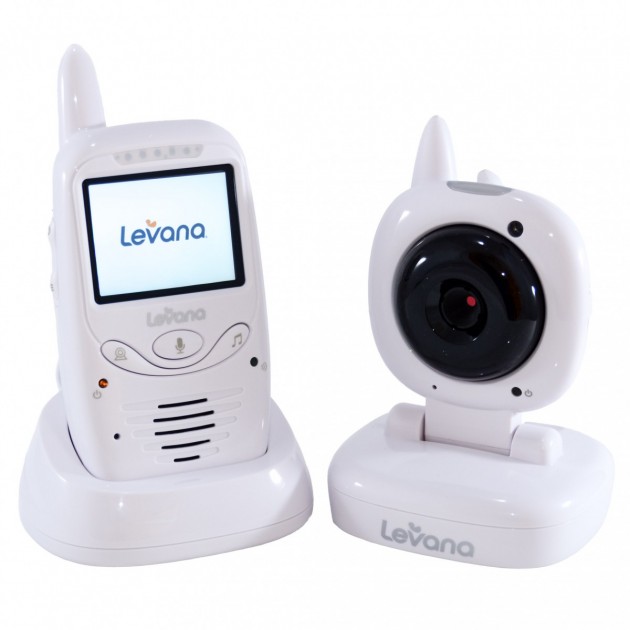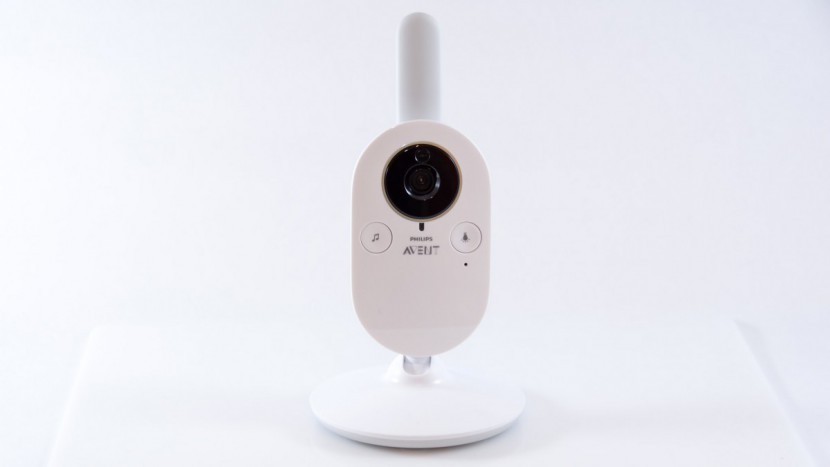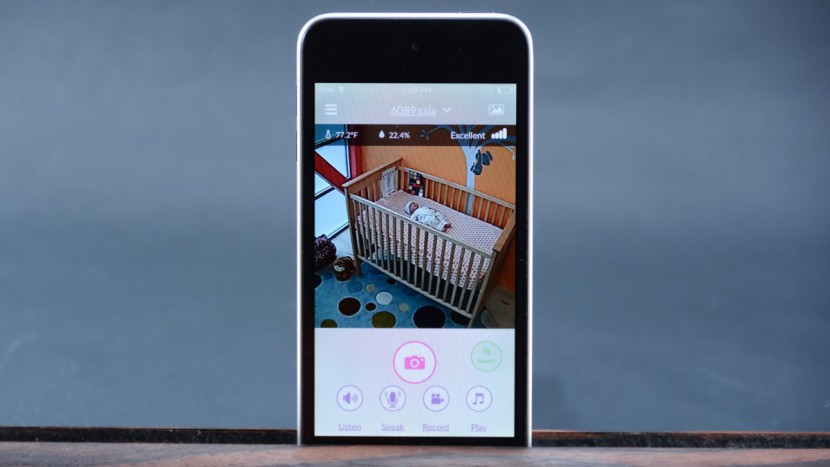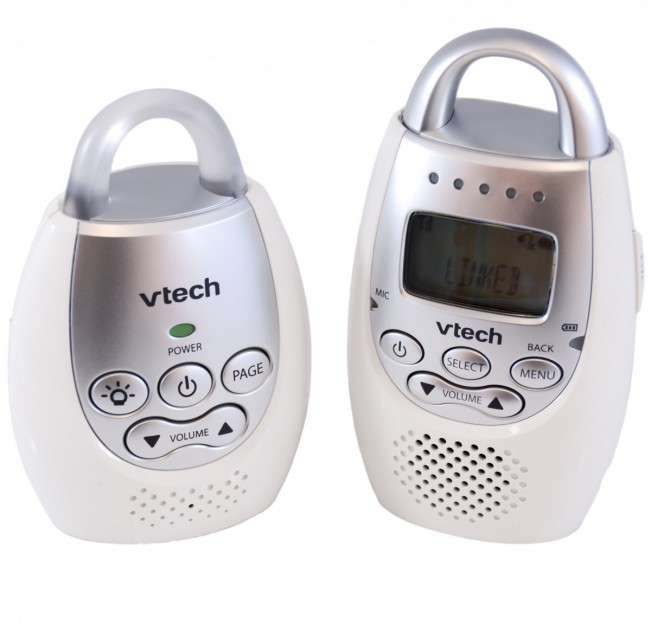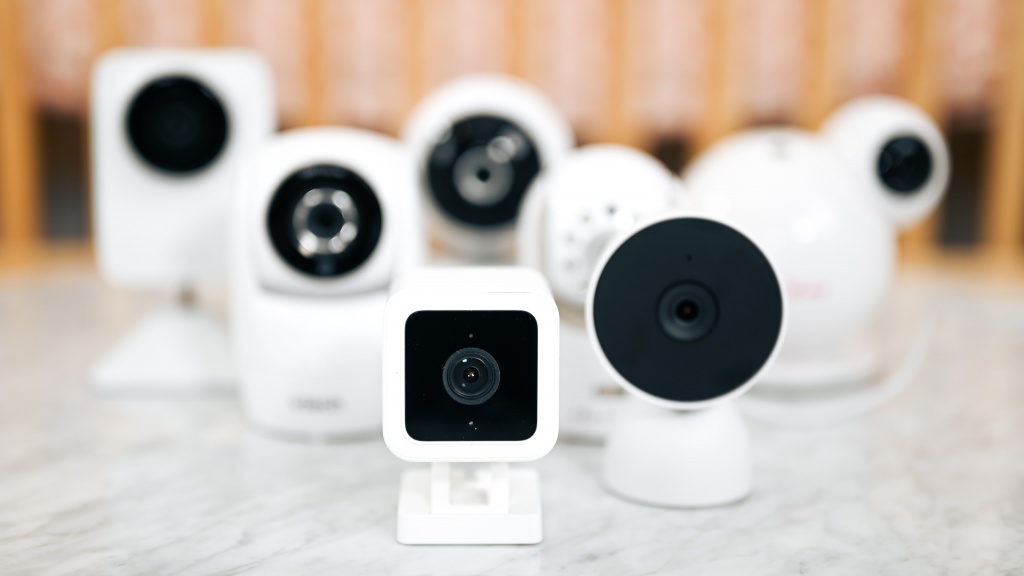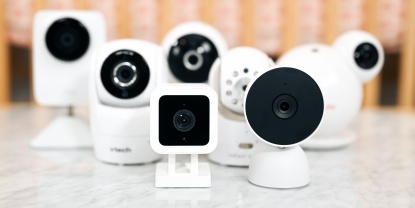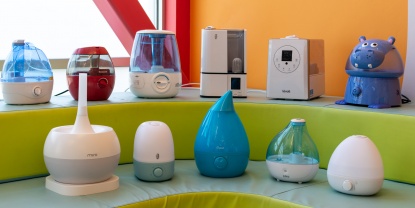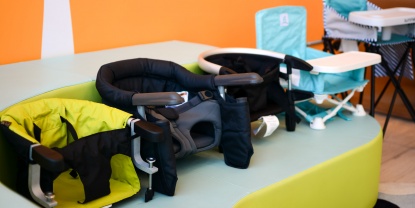We purchased top-ranked video baby monitor and did various tests and side-by-side comparisons over several months to determine which products work the best, which features are the most important, and which monitors are not worth your time. While video monitors were once a luxury item, they have become more the norm and are often found on baby registry lists and in nurseries. Because the prices of video monitors have come down in recent years (way down for many models), they are more affordable than ever. Once you add the convenience and peace of mind video images can provide with round-the-clock “eyes on baby,” it is easy to see why parents feel this type of monitor is a must-have product to ensure quality sleep for all.
Warning! - Watching is Addicting
While the ability to check on your baby visually (without disrupting a sleeping infant) is the main reason parents opt for a video monitor, it also happens to be highly addictive for new parents who won't be able to stop looking at the little person they created. Sure, peace of mind during naps and the long nighttime hours is a tremendous asset and can often prevent the need for parents to get out of bed, but just being able to spy on a little one cooing and breathing can be habit-forming. You might find yourself watching the baby so often that you get little else accomplished in the day or even sleep at night. Don't say we didn't warn you.
A Visual Monitor Can Mean More Sleep for Everyone
You might be asking yourself do I need a video monitor? Probably one of the hardest parts of being a new parent is the inevitable sleep deprivation that comes with it. In addition to the paranoia of possible nighttime dangers and wondering if the baby's room is the right temperature, there is the middle of the night wake-ups where you aren't sure if you heard the baby cry or not. You can't shake the worry without getting up to check on your baby in person. Between feeding and diaper changes, worried midnight visual checks of breathing are not uncommon for parents of newborns. Rest assured, you are not alone in your fears or your lack of slumber. When it comes to bringing home a new little person, one of the few things most parents can agree on is the terminal lack of sleep they endure over time.
A video monitor can alleviate some fears by allowing parents to “lay eyes” on their baby without getting out of bed and losing valuable sleep. Often, the baby's noises in the middle of the night don't indicate a problem or necessitate an in-person visit. Having a visual monitor by your bed can help you to make an informed decision on whether or not your baby needs assistance or if she can self-soothe and go back to sleep without you.
While an audio-only monitor can alert you to noise in the baby's room, you may not be able to assess whether the baby needs you. However, with a live video, you can make a better decision about whether to get up and help the baby. Without video, you'll need to get up immediately and check to avoid increased agitation from your little one, or you can sit and listen for further crying and risk that the baby will be inconsolable by the time you get there. If you get up and go to the baby, there is a greater chance you both will lose precious sleep that possibly wasn't necessary. Having a monitor that provides instant visuals might be worth all the money in the world if it means you both get more shut-eye. Luckily, monitor prices have come down. The quality has gone up, making it more affordable than ever to invest in a monitor that can last through toddler time and potentially act as a nanny cam or provide security later in life.
To find out what we would do or what we would recommend to a friend trying to decide what monitor they should buy,skip to the What We Would Do section. It might save you some reading and time.
Types of Video Monitors
There are essentially three kinds of video products, and only two of them are easy options for baby watching.
Dedicated Video Baby Monitors — this kind of monitor is by far the most common. It works like a walkie-talkie with the camera unit placed in the baby's room, and the parent unit used mobile or put in the parent's bedroom. The parent unit allows you to watch and listen to the baby. Each product is slightly different in the features they offer, but the basic principle is the same; the camera watches the baby, and parents can see the baby on the parent unit to determine the level of need. Many versions offer multiple cameras, sound activation, 2-way talk, zoom in, and camera pan and tilt from the parent unit. The parent unit works only with its corresponding camera, and it can't work for any other kind of activity; hence, it is considered a “dedicated” monitor.
WiFi Video Monitors — this type requires internet capabilities and a compatible device for use as the parent unit (Apple or Android device, or a computer). These monitors come with a camera that utilizes an app or internet website where parents log in and create an account for setup. These are more complex monitors and have a higher chance of failure, given the variables that can go wrong. With reliance on an Internet connection, WiFi use, and a separate monitoring device, there is an increased chance of technical difficulties or errors not present with the dedicated monitors. However, this type of monitor uniquely allows parents to observe little ones from anywhere with an Internet connection. While not the main reason parents decide to purchase a visual monitor for a baby, checking in on little ones from work can be very appealing for parents who miss their baby. Also, some models offer the ability to invite friends and family to take a peek too. This peeking can be very rewarding and exciting for long-distance grandparents to feel close or involved. Given the increase in availability, improved technology, and cheaper pricing of this type of monitor, we included several in our review. Also, the connection range of WiFi monitors is far greater than that of dedicated options. Depending on your home size, WiFi monitors might be your only option.
Wired Monitors- this type is more akin to a surveillance system than an actual “baby monitor.” It requires hardwiring the camera and a video monitor device, which might necessitate professional installation and is often cost-prohibitive, not to mention overkill. While it will certainly do the job of viewing your baby, it really is more than you need for checking in on your baby's well-being. This kind of system is often in places of business where security is a concern and surveillance a priority to discourage illegal activities. While we did not review any monitor of this type, we think it is important to mention it because it is the only kind of camera monitoring device that lacks “dirty electricity” concerns.
Range in Video Monitors is Worse than Sound Only Monitors
How far away can I be from the camera, and how many walls can be between the units for clear reception? The range is one of the most significant problems with monitors but even more so with video variety. Range problems, or lack of a useful range, encompass the biggest complaints about the monitors, which drive most of the parents' overall dissatisfaction regarding the monitors they've purchased. If a monitor doesn't work in your home, it is a useless item that doesn't even make a proper doorstop.
The problem usually begins with the range listed on the side of the box or the manufacturer's website. These ranges sound pretty good and make potential buyers feel warm and fuzzy, only to buy the monitor and be disappointed. In the fine print, which most parents don't read, it will go on to say that the actual range varies depending on walls, other electronics present in your home, and what materials make up your house. So a monitor that claimed 500 ft on the box might be more like 65 feet and two walls. This range might work in smaller homes, but it isn't likely to work in larger spaces or through floor/ceiling transitions. We suspect most parents will not be leaving their baby in an open field, so that range is useless to the typical consumer.
On the upside, most video options use digital technologies that experience far less interference from other devices. Digital technology helps the monitors eliminate static interference which is a problem with cheaper sound monitors. Also, for the WiFi options, parents don't need to worry about the range from the baby unit to the parent unit; as long as the WiFi signal is strong, the monitor should work, with just a minor concern over how far away from the wireless router the units are placed. If need be, parents can add a signal boost or extender to increase the router range.
Therefore, it is essential to do a little research in your home by measuring how far away the baby's room is from where the parent unit will go and how many walls the signal needs to travel through. This distance will give a place to start when looking at the ranges advertised by the manufacturers. Our review tested the monitors for their range in open spaces and in-home distances and how many walls. These tests provide a better picture than the manufacturer's, but it is only an estimate because it can still vary depending on your house and what is in it. Your specific range will vary based on your home's construction, but at least with our guide, you should be able to avoid the monitors that have no hope of working.
We strongly suggest that you purchase items through a retailer with a good return policy to avoid frustration and disappointment in a product that doesn't work in your home. If you have a lot of difficulties finding a monitor with the range you need, you might consider switching to an audio-only product or using a WiFi option. However, keep in mind that WiFi options potentially have an increased possibility of failure. However, if your internet is spotty overall or your upload speed isn't fast enough, it could necessitate an audio monitor as a backup.
Surprisingly, Sound is Still Key
Even though what you really want to do is gaze upon the beauty of a little person you love. So, therefore, you are only thinking about video quality, display size, and night vision; the sound clarity of a video monitor is still an important key factor. After all, when you are fast asleep, enjoying the limited time you get to sleep with a new infant, it is not the movement on a screen that wakes you, but it is the sound of a baby crying through the monitor that alerts you and disturbs your slumber. Given this belief, we looked at each monitor for sound-related features. Does the volume adjust high enough to hear when sleeping? Does it offer a voice activation feature, so you don't have to listen to the white noise of the baby's room as you try to fall asleep?
While we aren't looking for home theater-quality sound from these products, we are looking for a sound reception that is clear, easy to interpret, and accurately reflects what is happening in the room. Sound activation is just a bonus (the one we think is key) that helps decrease the ambient noise parents must endure falling asleep while still monitoring the baby. If sound activation isn't a feature, we also looked at whether or not the volume could be adjusted low enough to avoid hearing house noises but still loud enough for a crying baby to wake a dead tired parent at 2 am. Luckily, most of the models offer voice activation, and most were loud and clear enough to wake the dead, or at least the zombie-like state most parents fall into at some point during babyhood. While video monitors are not necessarily on par with audio-only products, they are adequate to do the job.
In our tests, most of the monitors struggled in the sound department with a poor, somewhat muffled sound, bright sounds that lack mid-range or low tones, and an inability to reduce or filter out the background or white noise even on the lowest setting. The background white noise of some of the parent units could be enough to prevent restful sleep for parents.
Visuals
You want to see those chubby cheeks and fluttery eyelashes on your little miracle, or you wouldn't be looking at this kind of product. Most of the parent units had similar display sizes, and larger ones didn't necessarily offer a better or clearer image. Except for the WiFi models, where the display is contingent upon what device you use as a parent unit, the other monitors we looked at were roughly similar in size (somewhere between 2.4-4.3 inches, with the majority coming in at 3.5 inches). We discovered that clearly seeing the baby outweighs how big the display is on the parent unit. Sure, it would be great to see each breath on a bigger display, but seeing a grainy image on a bigger display is disappointing compared to a clear image on a smaller display. In an ideal world, you would get a clear image on a big enough display to see detail but still small enough to transport easily from room to room if necessary.
So while bigger might be better for some devices, it isn't always the best. We think it is more important to have a display that shows your baby and the room as it truly is than a large image that renders an unclear visual. If you can't see the baby well enough, there is no point in having a video monitor. If the goal is a video that allows parents to assess their baby's needs without leaving their warm bed, then a display parents can't see well doesn't fit the bill, no matter the size.
The WiFi cameras provide the best video images thanks to their 1080p technology and the parent device, which is usually more advanced than the parent unit with dedicated monitors.
Night Vision is More Important than Daytime
Undoubtedly, you will be using your monitor during the daytime while little ones are napping, but your primary viewing time will probably be at night. This use makes the night vision and display options offered during the wee hours more important than the image quality the camera provides during daylight. All of the monitors we tested included infrared LEDs that provide a black and white view of the baby even when the room is very dark. While a black and white picture is not as great as color, it is the only viewing option available for nighttime peeping.
For infrared to work, the camera must be close to the baby so that the LEDs can work their magic. Too far away and you won't be able to see the baby; too close and the camera or its cord could pose a potential health risk. Some of the cameras boasted a range up to 20 ft or more, but most worked best at closer to 10-15 ft. Luckily, it would appear as though most of the monitors we reviewed work well enough to position the camera just about anywhere in a standard-size room. However, if you live in a large house with giant bedrooms, you might need to be more flexible on where you place the camera to ensure proper night vision capabilities while maintaining a safe distance from the baby and crib.
The clarity of images for the night viewing portion will be naturally downgraded somewhat from the visual of daytime viewing. However, this doesn't mean you can't find a monitor and camera combo that offers a clear picture. Many of those we tried are so crisp at night we could see more details of the baby and the nursery than were necessary for proper monitoring. In general, we are not disappointed with the night vision of most of the models in this review. The poorer quality video only lights up a small portion of the field of view with a spotlight effect. This effect leaves parts of the room black or with fuzzy images that lack the ability to see if the baby's eyes are open. All of the WiFi monitors offer the best night video.
Pan and Tilt
In the beginning, the baby won't be doing much but lying in bed and manufacturing waste products, so the idea of needing a pan and tilt feature might leave you feeling like they are gimmicky and not worth the extra price. You will probably set up your camera and point it directly at your lovable human larva, which will be the end of the story. Unfortunately, or fortunately, depending on your point of view, the baby will start moving, and before you know it, your baby will be cruising all around the crib and sometimes out of the crib like a monkey at the zoo. When this happens, and trust us, it will happen, you will find yourself saying, “Ah, now I see what all the fuss is about” when it comes to a remote-controlled camera.
Most of the monitors on the market today will claim they offer pan and tilt. However, there are two kinds of pan and tilt, so make sure you get the one you want and think you are getting. The first kind of pan and tilt is the true pan and tilt, where your actions on the parent unit cause the camera in the baby's room to move and scan the room (remote camera control). It changes the field of view by increases the amount of space you can view through the camera by moving the camera to see more parts of the room. Depending on which camera you choose and where you mount it, you might be able to view the entire room using the pan and tilt features. This type is the least limiting and most versatile version of pan and tilt.
The second kind of pan and tilt is more like a bait and switch (sort of). This pan and tilt doNOT control the camera in the room at all. What it actually does is pan around the original field of view while using the zoom feature. So, first, you need to zoom in, then you can pan around the field of view you originally had only with closer images. This type gives the illusion of pan and tilt, but it doesn't increase what you can see or how much of the room is available for viewing. Whatever your original field of view was, that is all you will ever have. Ever. You will never see where the baby has gone unless you go into the room and manually move the camera to a new location which isn't practical if you are trying to avoid disrupting the baby.
While the kind of pan and tilt each model has may not be a deal-breaker, and in a smaller room, the remote control might feel like overkill, it is worth researching which version a product has so you know what you are paying for and exactly what you are getting. Thinking you are getting a camera and parent unit with real pan and tilt and total control, only to find out you have no control over the camera at all, can be frustrating and disappointing. If the camera offers a field of view almost as large as the room, you might be able to forgive that it isn't adjustable from the parent unit.
Zoom
As there are two types of pan and tilt, there are two types of zoom. The first is an optical zoom, or a traditional zoom in and zoom out feature you might be familiar with on some cameras where the camera lens does the work to zoom into the desired object. This type offers the best image clarity, and it has the most versatility with the clearest images. The Infant Optics DXR-8 comes with an interchangeable 2x optical lens that manually attaches to the camera, and no other camera in this review offers optical zoom.
The second and sadly more common type of zoom is called digital zoom. Digital zoom is sort of like using the zoom feature on some software or a crop tool. It is also similar to how many smartphones and tablets work when you want to make a portion of an image larger. This kind of zoom looks like it brings you closer to the desired action, but it doesn't really get closer. All it does is crop and eliminate the portions of the image you don't want to see. So while it looks like the baby's face might be closer, it isn't. This type results in images that aren't as clear and are often pixelated. Because you only see the same image, cropped, you lose some of the resolution and clarity when you zoom. This lack of resolution means this is not the best kind of zoom. Cameras that only offer this kind of zoom often result in unclear images and make it hard to distinguish details like the baby's face. The WiFi cameras offer the best digital zoom with the clearest details. Most of the cameras in the review offer a 2x digital zoom, likely because a more significant digital zoom would leave the images too grainy to see what is happening.
Sound Activation vs. Notifications and Alerts
Sometimes features and the terminology used for monitors can get a little confusing. While it is easy for those in the industry to toss around terms as if we all know what they mean, it isn't always easy for parents to know what the heck they are describing.
Sound activation is one of our favorite features, and we think it is one of the top features parents should consider. But what is it? Monitors are designed to relay sound from the baby unit to the parent unit. Many monitors do this by sending a constant stream of noise from one room to another and do very little to differentiate between ambient room sounds and the baby crying. This means you will be hearing the monitor all the time, all night long, while you try to sleep (possibly unsuccessfully). Sound activation is a feature that limits the level and type of sounds transmitted from one unit to another. This means the parent unit is silent when the baby isn't making noise. A feature like this can help parents get more sleep by offering a quieter room for them to sleep. This might be an all-or-nothing function, or it could be something parents can adjust themselves using a sound sensitivity adjustment feature. Either way, having sound activation means you only hear what you want to hear when you want to hear it. This feature is available in some of the dedicated and WiFi-enabled monitors, but not all.
Notifications and alerts are entirely different and not as useful for parents monitoring a baby. These features work by sending a message to your handheld device or an alert email telling you that a sound or motion has occurred in the room. While this feature might be useful if you use the monitor for security (its original purpose), it isn't great for a baby.
Why?
Notifications often come after the fact, so by the time you get the notification that sound is happening in the baby's room, your baby could have been crying for several minutes or longer, depending on the monitor. Also, a sound notification will not tell you if the baby is crying hysterically and needs you now or is just cooing to herself and doesn't need you. But what about motion alerts? While a motion alert might be interesting if you are worried about someone entering the room without your knowledge, it will also come after the fact. The monitor could send you loads of motion alerts for a baby playing with her toes. We found the notification and alerts feature mostly useless for younger babies and only mildly useful for older babies and toddlers. While testing the monitors, we felt we received far too many alert notifications and found the constant stream sort of annoying. This feature is only available on WiFi-enabled monitors.
In the end, we like the sound activation feature and almost consider it a deal-breaker if a monitor doesn't offer it. However, if you don't mind white noise and constant static sound, perhaps it isn't a deal-breaker for you. Alternatively, the ability to receive a notification is not a necessity. It is more of a personal choice, one you might even find yourself turning off (as we did eventually), and it is a feature we don't recommend using for babies.
Multiple Cameras?
A video monitor might have a longer shelf life than an audio-only monitor. Let's face it, what your preschooler might be shouting from behind their door is probably far less important than whether or not they've snuck a marker into nap time and are decorating the walls and furniture with it (true story). So while most audio monitors will hit the donation pile by the time children are 3, a video monitor might just be hitting its stride of usefulness. The ability to monitor little ones at all times, regardless of what room you are in, might be exactly what you need to relieve anxiety and increase your alone time. Add on the feature of two-way talking, and you could be telling little Johnny to drop that marker without even getting out of the bathtub. The ability to add cameras to your device will increase its usefulness over time by giving you the ability to monitor multiple rooms or different parts of a larger room so you can keep tabs on two children or one rambunctious one.
Most of the monitors we looked at could add at least one additional camera; one is a single camera only device, while others could add up to 4 or more. If you have plans in the future for more children, or you can imagine the need for more cameras down the road, it is probably best to purchase them now, just in case compatible cameras are no longer available down the road. You can count on the additional camera sold separately to run you around $100 each (for dedicated monitors, depending on the brand) or the same as the first camera for WiFi options. This cost might be worth it if it means not needing to buy a new unit when baby number two comes along.
The other aspect of multiple cameras to consider is that the WiFi versions can be used as a nanny camera so you can see what is happening even when away from home. Being able to put a camera in each room your child and nanny might occupy means the nanny can't escape the eye of big brother, and you can feel more confident in your choice of caregiver.
Electrical Pollution or Dirty Electricity
Excuse me? Dirty what? This concept falls into the category of things you didn't know you needed to know but really should know, and then after you know will wish you didn't know. Electronic devices all have an electromagnetic field (EMF) associated with them; wireless devices and items like microwaves have even more. EMF can be associated with radiation, which can potentially be harmful in heavy doses. With more and more technology in our homes, much of it wireless, the amount of EMF exposure is on the rise. Overexposure to these fields might affect human health (the studies are still in the works). These consequences might even be more significant to babies because they are in the process of developing and have thin skulls for bone and brain growth. These factors could potentially leave a baby more vulnerable to exposure to EMF than adults.
Most of the baby monitors are wireless devices and are more likely to have significant EMF emissions than wired electronics. Also, the cameras are often placed close to the baby's crib, giving the baby increased exposure for the duration of their sleeping hours. Some preliminary studies indicate that exposure to the kind of radiation caused by wireless electronics may cause health issues over time. The jury might still be out on this topic. Still, we feel it is essential to review the information and limit exposure when possible to be safe until more research and evidence is presented either way.
Putting the monitor as far away from the baby as possible can decrease the amount of EMF the baby is exposed to. Using monitors only when necessary can also help limit exposure and the potentially harmful effects. Some monitors with voice activation might limit the transmission amount of EMF (we aren't sure, but different sources suggest it). Finally, using a WiFi version plugged in with an Ethernet cable usually limits it even further. In general, decreasing the number of electronics in a baby's room is a good idea. After that, unplugging devices when not in use is a significant step. Finally, placing any electronic devices as far away from the sleeping baby as possible is also smart.
We used an EMF monitor with each device in our review to determine EMF levels and how far the camera needed to be from the crib to limit exposure to the baby. At 6 inches away from the baby monitor, almost all of the monitors gave off an EMF reading of 6+. At 3 feet away from the devices, most of those reading were split in half or better. At 6 feet away (most cameras can be placed at least 10 - 15 feet from the baby), most camera readings were below 2. If you want to limit the amount of EMF your baby is exposed to, picking a device with the lowest reading is your best bet, then place it as far away from the baby as possible to still be useful. The parent units didn't decrease as much as the cameras with distance, but it is probably still a good idea to keep them as far away as possible to be still usable.
Security/Privacy Concerns
As with any product, safety and security are important to us here at BabyGearLab. The dedicated monitors are relatively safe given their lack of internet connectivity and use of DECT technology to encrypt the signal (DECT encryption technologies are generally quite secure, although some hackers have managed to find a hole in some DECT portable phones that transmit without encryption). But, WiFi monitors present a more compelling target for hackers, and some products, such as some of the Foscam models (which didn't make the cut for our review), have been a victim to some well-publicized and somewhat disturbing hacks where hackers are watching the baby and used the speak-to-baby feature to scare parents.
Nest Cam Offers Strong Security
To our knowledge, there have been no successful hacks of the Nest Cam cameras (or its predecessor, the Dropcam) without the hacker having physical possession of the device. We think this is significant since it suggests that Google's (owner of Nest) substantial and ongoing investment in security technology is paying off for parents who rely on their Nest Cam products. Google uses a unique architecture in their implementation that relies on a secure encrypted connection between Nest Cam and Google's secure servers and a separately authenticated and secure connection between devices (computers, phones, tablets) and the Google servers. It appears to be a reliable configuration, and given Google's unique investment in security across their product family and commitment to paying substantial rewards to any hacker who can find security holes; we believe Nest Cam is the best bet for those parents interested in WiFi monitors and also concerned about security.
Infamous Hacks of Foscam Monitors
In this section, we'll try to give you a sense of some of the history of hacks of WiFi monitors, particularly the Foscam products, and what you should know about WiFi monitor security.
Since all the WiFi monitors need to transmit the video signal over the internet, they implicitly provide a potential target for hackers to intercept the signal and decrypt it. However, differences in how the video signal transmits over the internet and different encryption technology mean different monitors offer different security profiles. A few cases with some Foscam models have been widely publicized and left parents feeling a little uneasy about who might be looking in or talking to their beloved babies, and rightfully so. Given that no camera connected to the internet is 100% fail-safe, it makes sense for parents to educate themselves and take some precautions.
If you search the internet for “video baby monitor hacks,” you'll quickly find a series of articles such as:http://kdvr.com/2015/04/21/couple-whose-baby-monitor-was-hacked-has-message-for-other-families/
Foscam claims that firmware updates have addressed these security holes, but the company is unique in offering additional security recommendations that seem bizarre and arcane for a consumer product aimed at parents.
Check the logs of your Foscam cameras often. Foscam cameras have embedded logs that allow you to see exactly which IP addresses are accessing the camera. You will be able to tell if an outsider has gained access to your camera.
We feel that the topology used by the Foscam IP cameras, where you connect directly to the camera via its IP address, is inferior to the encrypted security method used by Google with their Nest products. For these reasons and others, the Foscam IP-based cameras did not make the cut for our review.
Across the board, WiFi monitor manufacturers recommend that you:
- Make sure you have the most recent firmware for your camera
- Set your own password; do not rely on default passwords
- Make passwords at least 8-10 characters long and use a combination of lower and upper case letters, numbers, and special characters to make it harder to guess
- Change passwords periodically
- Limit what the camera can see
- Unplug the camera when not actively monitoring your baby. Do not rely on turning it off; many cameras can be remotely activated if hacked
Security by Product
The Nest Cam is unique in its implementation. It relies on secure and encrypted communication from the device to their servers and from the server to your PC, tablet, and phone. We feel this is a vastly superior topology for assuring security and also a key part of why the Nest Cam is so easy to install and use. Nest Cam advises parents to keep their apps up to date and not enter their Nest Cam username or passwords into 3rd party sites. Nest Cam is only supported by the Nest Cam website and app, and requests from other sources could be a security risk. You can read more about the precautions Nest Cam has taken, and continues to take, to ensure the security of their product and the safety of their users here.
We were unable to find any stories about hacked Nest Cam feeds. Even when private companies have tried to, they've been unable to hack into Nest Cam's predecessor, the Dropcam's feeds, without first having physical access to the camera itself to take it apart to “read” its identification data. A concern we feel is unlikely unless you have a sworn enemy (Superman vs. Lex Luthor) or are famous and accept gifts from strangers (you probably shouldn't do this).
Dropcam (the company name before Google's purchase) Co-founder and CEO had this to say about attempts to hack the Dropcam by the Synack company in 2014:
We did not find much in our research about security for most of the WiFi options. Still, we did find some interesting articles concerning the iBaby M6 (not to be confused with the iBaby M6S WiFi of the iBaby Care M7 WiFi that we tested for this review). A study (no longer posted) found that the iBaby M6 had some vulnerabilities that made it potentially susceptible to hackers. Here is the article that reported on the findings that listed the iBaby M6 and the iBaby M3S as monitors NOT to buy.
We contacted iBaby multiple times for comment and information on what changes they may have made to the newer models to address any of the potential security concerns outlined in the study. When pressed for more information or the opportunity to offer specific details outlining exactly how the concerns were addressed, the Co-founder and President had this to say:
https://ibabylabs.com/how-to-protect-your-baby-monitor-from-being-hacked-into/
What does this mean for the iBaby Care M7 WiFi and the iBaby M6S WiFi? It is hard to say. We could not find any information about this monitor being hackable, and it is not one of the versions called out in the article or the study. We suggest parents proceed with caution and follow all advice for avoiding a hack if they choose to purchase an iBaby monitor.
Security Conclusions
From our research, we believe that Nest Cam offers the most secure internet monitor we reviewed and has the power and resources of their parent company (Nest/Google) to help back them and prevent potential hacking issues. Nest Cam even uses its own servers and special private key codes and certificates.
Best Crib Viewing Requires Wall or Ceiling Mounting
The cameras need to be relatively close to the baby for infrared LEDs to work as a general rule of thumb. If the camera is too far away, the night vision won't work as well as possible.
With this in mind, we suggest the cameras be mounted on the wall or ceiling as far from the crib as possible to decrease exposure to EMF but as close as necessary to work in the dark. Not all cameras can be mounted, so if you think this is something you will need or want, be sure to check the specifications for details. If necessary, a small shelf might be useful for models that aren't mountable.
Safety
For the sake of safety, please be sure to route and secure ALL cords up and away from children's reach. They are a significant strangulation hazard and should never be within reach of a baby or in proximity to fall into or be pulled into a crib. Do not wait until your baby is more mobile. They will get there before you know it, and the first time you notice could be after they find the cord.
First - WiFi or Dedicated Unit
This decision will be largely a personal preference, peace of mind, or the range needed for your specific purposes. If you have WiFi in your home and aren't sure if you want to go with a WiFi option, you need to consider how well your wireless works and if it is reliable. If it works well and is reliable (it isn't spotty or has connectivity issues), it might be a good option for you that offers lots of potential down the road. It will allow you to move the parent unit farther from the baby's room, and the video feed can be seen online from just about anywhere in the world. The downside is that this type of monitor will fail if your internet fails, leaving you without any real coverage, which might go unnoticed if it happens in the middle of the night. Some also don't seem to work that well on all parent devices. The best kind of devices are those that are mobile and can be placed bedside for easy nighttime monitoring, so keep this in mind if you find the WiFi products tempting, you will probably need a device that can do nothing but monitor your baby, at least during the night time hours.
A dedicated unit is a nice option if you have limited internet, lack dependable WiFi connectivity, or don't have a device to use as a parent device. These models have a baby monitor and a dedicated parent unit that works harmoniously and continues to work via battery even if the electricity goes out. If you want true peace of mind monitoring, these models are probably the better bet. Both options can come with cameras with all the features most parents will be looking for and the ability to connect multiple cameras should you decide to in the future.
Second - Field of View/Pan/Tilt/Zoom
The second thing to think about in narrowing your options is whether or not you want to control the camera from the parent unit, or if you are content just being able to navigate about in a stationary field of view, and how large that field of view is.
If you want or need the ability to control the camera inside the baby's room from the parent unit, getting a true pan and tilt model is essential. This feature is usually in higher-priced models, but it is not a guarantee; just reading that a model has a pan/tilt/zoom feature is not enough to ensure that the camera is actually adjustable from the parent unit. Be sure to read the fine print before purchasing any monitor if this is a desirable feature. It can be frustrating to have a baby or an older toddler just out of the field of view, and there is no way to see them without going into the room and disturbing them. Adjusting the camera from the parent unit is a bonus, especially if the field of view is a small one in standard mode. While it might not seem as important when your baby moves very little, it can increase the unit's longevity if parents continue monitoring mobile toddlers long after infancy has passed. Nothing is more frustrating than being able to hear the “party” taking place in a 2-year-old's room but being unable to “see” it from a stationary camera with a limited field of view.
Parents can still take a peek at children from work no matter where they might be sleeping or playing in their room, and after zooming in can pan around the room as necessary for a greater detailed image. If the field of view is large enough and the image quality is good, then zooming in and panning within the original field of view is still acceptable.
Third - Additional Features
After you decide if you want a WiFi model or dedicated unit, and you have narrowed those down to only the ones that offer the kind of pan, tilt, and zoom features you want, you will likely be looking at only one or two possible options. If there is only one, your job is done, and you have found the best option for your needs. If there is more than one possibility, you need to consider the additional features that mean the most to you. Many of the monitors have additional features, but very few have all of them, and even fewer will have all the ones you may want.
Some of the features to consider would be:
- Ability to add cameras
- Two-way talk to baby
- Sound activation
- Motion detection
- Parent unit screen size (WiFi options have the greatest variability)
- Visual quality
- Temperature and other air sensors
- Lullabies and other baby-centric features
If you have a strong preference for any of these additional options, then this will likely narrow down the field to only one possibility and the video monitor of your dreams. We highly recommend sound activation or a sound threshold setting option. Whether or not a monitor has this feature is almost a deal-breaker for us. We think being able to fall asleep and still monitor the baby is essential. Falling asleep is easier if the monitor is quiet and not generating superfluous noise.
Last-Budget
If budget is a concern for you, like many parents, it can also be a deciding factor in narrowing down your choices. The monitors in our review range in list price between $56 and $400. Once you've narrowed the field, the price could be the deciding factor that helps you find “the one.” If you are willing to forgo some of the bells and whistles, it is easier to find a budget-minded video option with good visuals.
What Would BabyGearLab Do
We think parents should consider a hybrid monitor solution that combines a useful WiFi video monitor with a sound monitor.
Why would we get two monitors? Won't that be redundant?
The goal of buying any monitoring device is peace of mind and more sleep. While viewing your little one is helpful and can provide useful information, it is the sound of your baby crying that wakes you from your slumber. However, the WiFi video monitors universally (in our testing) offer subpar sound and frequently are devoid of the advanced sound filtering/activation features readily available on the best audio monitors. These advanced sound functions can greatly increase your chances of better and longer sleep. So, if you employ an exceptional sound option as your main device, you'll get impressive sound when you want it, only when your baby is in distress; otherwise, it will remain mum when you and the baby are sleeping (which is vital to deep, restorative sleep).
The WiFi video devices' role begins when you are alerted to the crying via your sound monitor. You can then utilize the video monitor to see your baby to determine if they need you. Also, WiFi monitors let you check-in away from home or when your baby is with a sitter — something we love.
You can decide to rely on the video monitor's sound properties, but none of the WiFi monitors we tested provide sound clarity or functionality on par with the sound monitors. In general, the WiFi video monitors in our lineup always relay some constant background noise (static or white noise). This chronic sound relay can impact the ability to fall asleep or stay asleep, and when your baby does cry, the sound you hear can be challenging to decipher.
If you buy a quality sound monitor, you'll get the audio clarity and features you need to get the sleep you require, all at an affordable price. If you then pair a sound monitor with a WiFi video unit, then you create a combination with excellent sound features and superior visuals when you need it. The sound monitor ensures quality sound that can wake you from a deep sleep but remain quiet when necessary. It can also act as a backup should your internet unexpectedly go down or suffer a failure in the middle of the night.
We feel the combination of a WiFi camera and a sound monitor is a win-win and one you can buy for a wallet-friendly price on par with or cheaper than some of the fancier video competitors.
Conclusion
In the end, choosing a video-type monitor can be a daunting task. Luckily, our review and testing have done the homework for you. Once you walk through the selection steps, you will find the best monitor for your baby. The technology for this type of monitor has grown leaps and bounds, giving parents a broader range of possibilities that work better than previous generations of video monitors. We feel confident that there is an option to give even the most paranoid parents peace of mind. Happy viewing. Wait! We mean happy sleeping!

